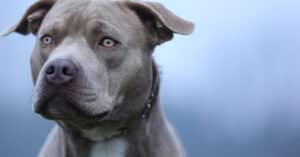With their goofy looks and interesting facial features, it’s hard not to love boxer dogs. This dog breed has a rich and interesting history that hides behind its loveable demeanor. As popular as they are, not everyone knows about what makes these dogs special. Boxers are a common breed throughout the U.S., and many families enjoy their company. One could argue that people in the U.S. have a greater affinity for them than they do in their home nation.
Let’s break down the top 10 incredible boxer facts and give you some fun data and valuable background information about this breed.
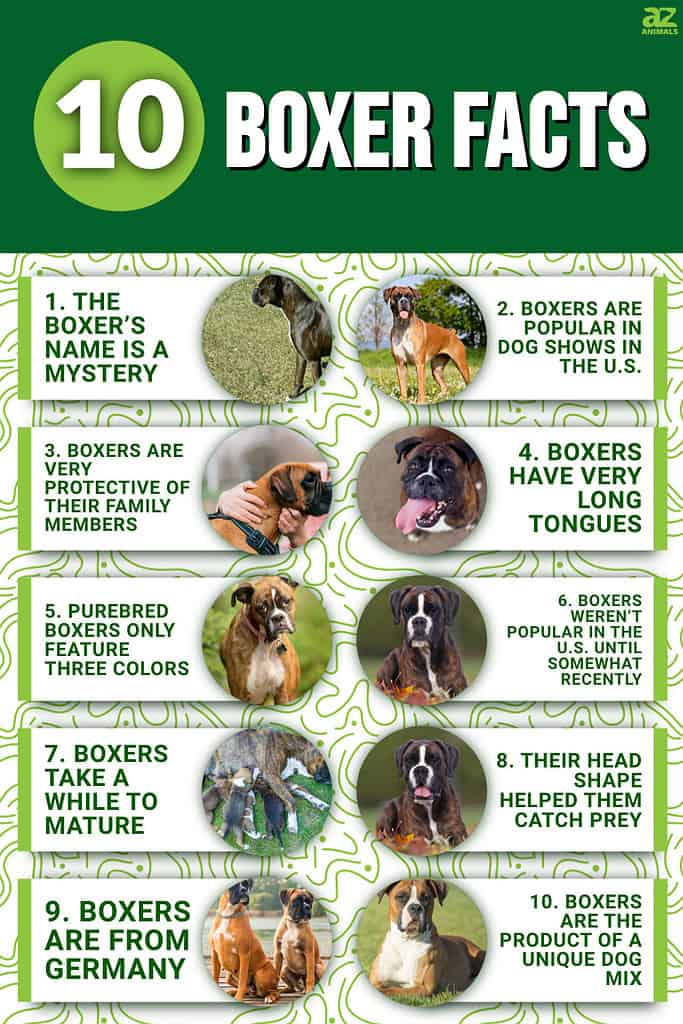
10. Boxers Are the Product of a Unique Dog Mix
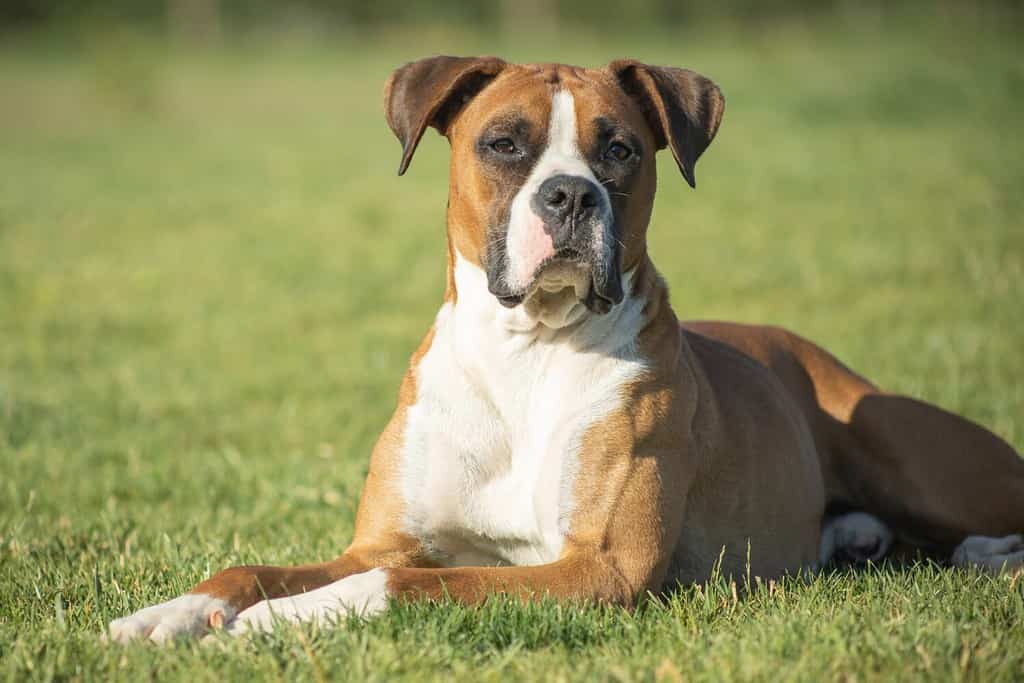
Dogs resembling the boxer, like the Bullenbeisser, have been recorded as far back as the 16th century.
©ibanezfilm/Shutterstock.com
The original boxer comes from a mixture of the Old English Bulldog with another dog called the Bullenbeisser. If you haven’t heard of the Bullenbeisser, don’t worry. Most people haven’t since they have become extinct via crossbreeding.
In the 1870s, dog breeders began the process of mixing the two breeds, making the modern boxer. However, dogs resembling the boxer, like the Bullenbeisser, have been recorded as far back as the 16th century.
9. Boxers Are from Germany
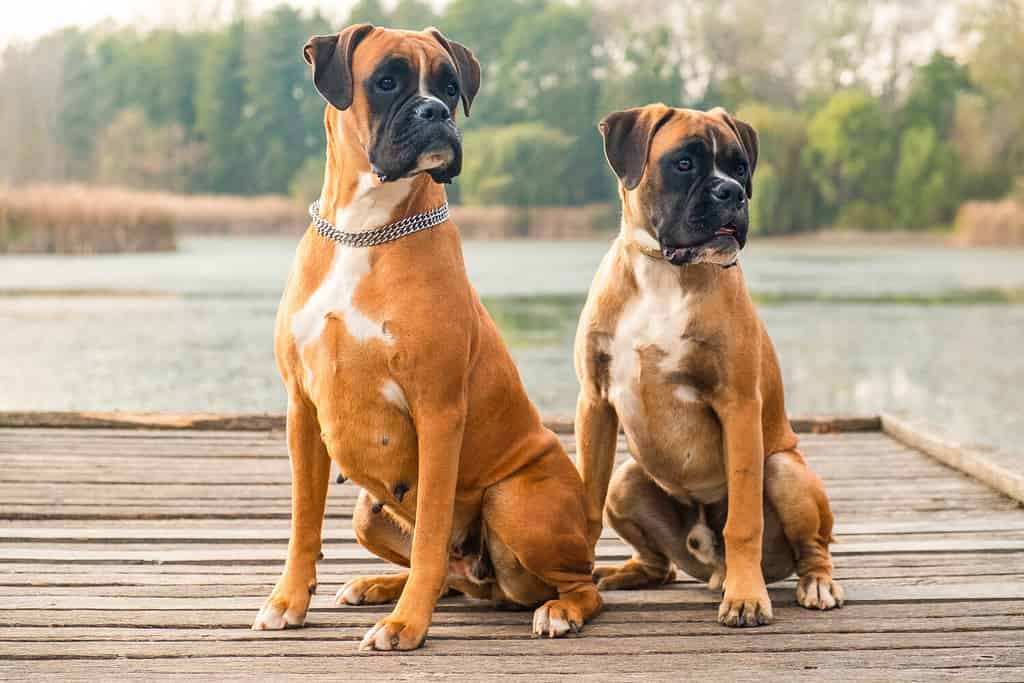
In the early days of the species, boxers were used for hunting as well as baiting bulls in bullfights.
©Gabor Kormany/Shutterstock.com
The name “boxer” doesn’t lend itself to a particular nation. Yet, if we look at the dogs that were bred to create the boxer, it’s clear that it’s a German breed. In fact, the name Bullenbeisser translates to “bull biter”, and that should give you some idea of how these dogs were used.
In the early days of the species, boxers were used for hunting as well as baiting bulls in bullfights. Boxers are tough and more than capable of taking down prey while hunting. However, they did not have much of a chance against large bulls.
8. Their Head Shape Helped Them Catch Prey
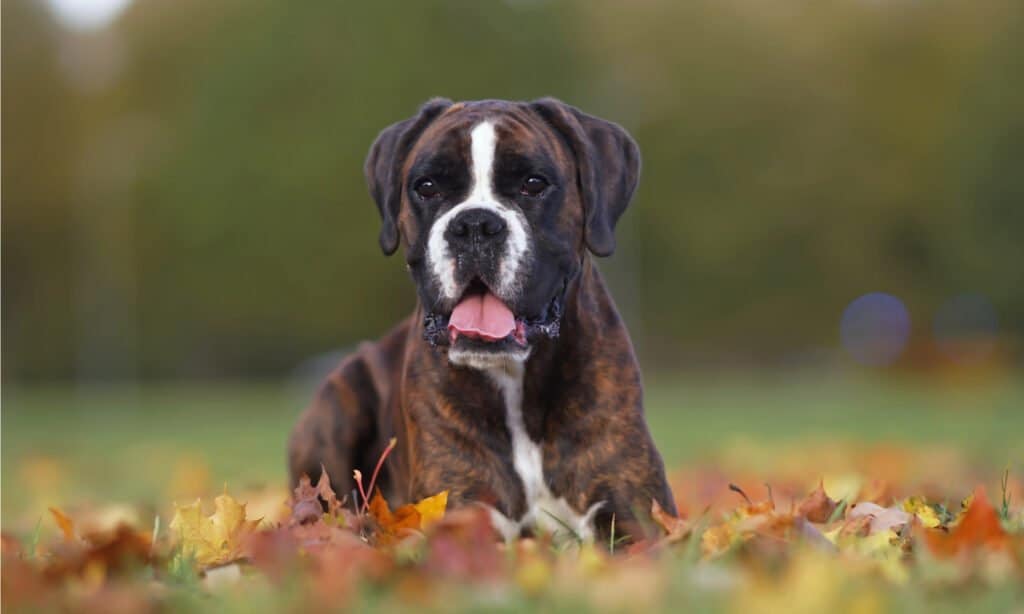
Boxers may look friendly, but their bodies and head are made for hunting.
©Eudyptula/Shutterstock.com
Boxers have a very unusual head shape, complete with a very short snout and an undershot jaw. They also have wrinkles on their faces and a “squished” nose. Believe it or not, all these features helped boxers take down large prey.
The short snout and undershot jaw allowed them to bite and hold their prey up close and with all their power. This was helpful to hunters that wanted to get to their injured or fallen quarry. Moreover, the squished nostrils help the dog breathe while it has clamped down on its prey. So even if their mouths were full, they could continue to breathe.
Lastly, the wrinkles on their face prevented blood from getting into their eyes. All this seems macabre, but the boxer was bred to hunt.
7. Boxers Take a While to Mature
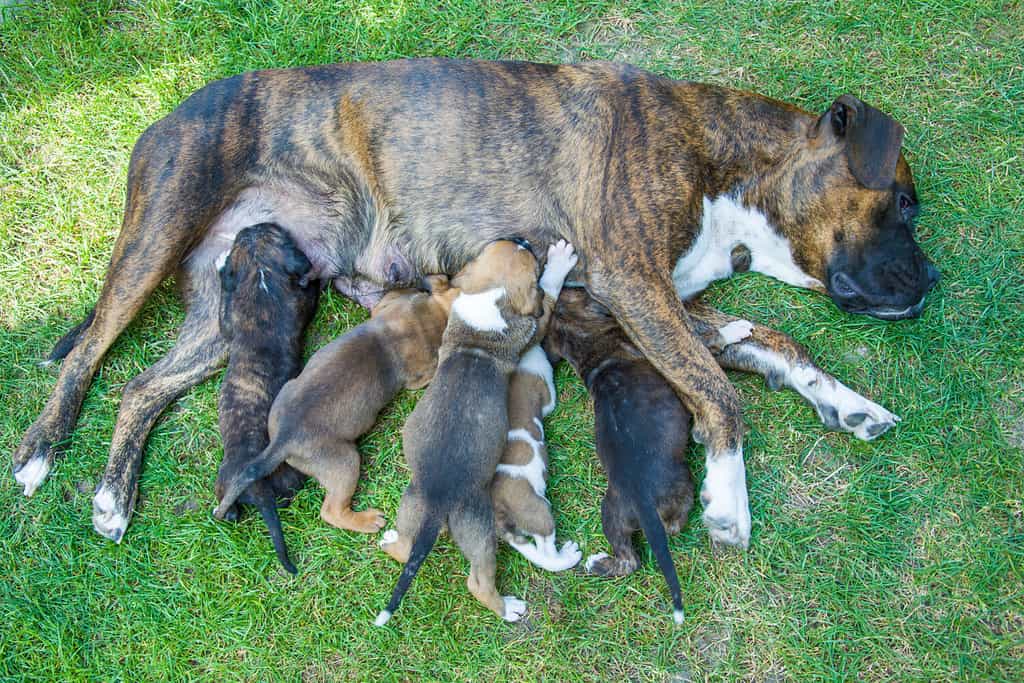
As boxers mature slowly, it can take them about three years to fully mature.
©Dariusz Banaszuk/Shutterstock.com
You may hear people talking about “Peter Pan” dogs from time to time, and the boxer is probably the most common reference point. The term “Peter Pan” means that the dog stays in its youthful phase for a long portion of its life. Boxers mature slowly, and it can take them about three years to fully mature.
This breed will continue to have its youthful exuberance for a rather long time. The only problem is that the dog might forget that it’s a grown animal and no longer capable of fitting on its favorite human’s lap.
6. Boxers Weren’t Popular in the U.S. Until Somewhat Recently

Boxers are one of the most popular breeds in the United States.
©iStock.com/Eudyptula
The boxer breed as we know it today has only been around for perhaps 150 years. Although these dogs were well-known and loved in Europe, they didn’t cross the Atlantic Ocean until after 1940.
Up to that point, boxers had been working dogs on farms, partners for hunters, and even as police dogs. They were also used during World War I and World War II. Once boxers made it to the shores of the U.S., people fell in love with the breed, and it’s now one of the most popular dogs. Boxers are not only a very popular pure breed, but many different boxer crossbreeds are very popular these days.
5. Purebred Boxers Only Feature Three Colors
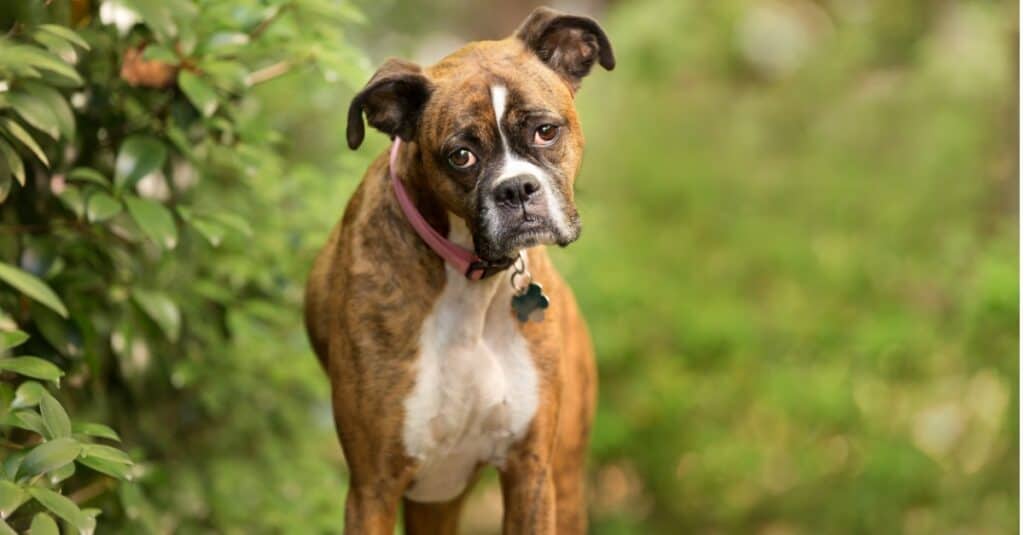
Brindle is one of the original colors of boxers.
©iStock.com/AprilCarlsonPhotography
Purebred boxers can only come in three colors. They are fawn, brindle (a tawny color with other streaks of colors), and white. Some people think that they have a black purebred boxer, but that is just a very dark brindle and not black. Of course, crossbreeds can have a whole host of other colors.
4. Boxers Have Very Long Tongues

The world record for the longest dog tongue belongs to a boxer named Brandy.
©Lyubov Timofeyeva/Shutterstock.com
When boxers were bred to have a short snout, it seems that nobody checked their tongues. That’s just a joke, of course, but the boxers did emerge with a longer-than-normal tongue. In fact, the world record for the longest dog tongue belongs to a boxer named Brandy, and it measured about 1 ft 5 in long! Boxers are believed to be the breed that has the longest tongues!
3. Boxers Are Very Protective of Their Family Members
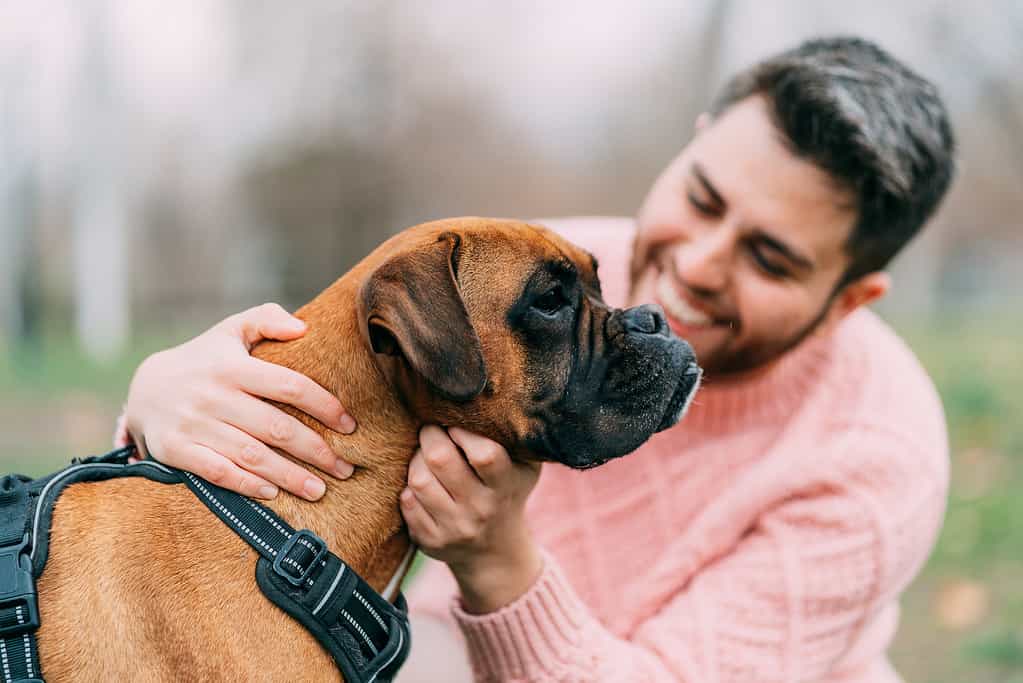
While they are protective of their people, they can’t always tell the difference between an outsider and an intruder.
©iStock.com/Juan Hernandez Carmona
For the most part, boxers will attach themselves to one or a few members of their human family. They are very loving and trustful of those people, but they do not treat outsiders the same. While they are protective of their people, they can’t always tell the difference between an outsider and an intruder.
That is why it is so important that people take the time to socialize their boxers while young. They need to know that other people aren’t a threat. The belief that these dogs are not as friendly to others as they are to their favorite people has led to them being considered one of the most dangerous dog breeds.
2. Boxers Are Popular in Dog Shows in the U.S.
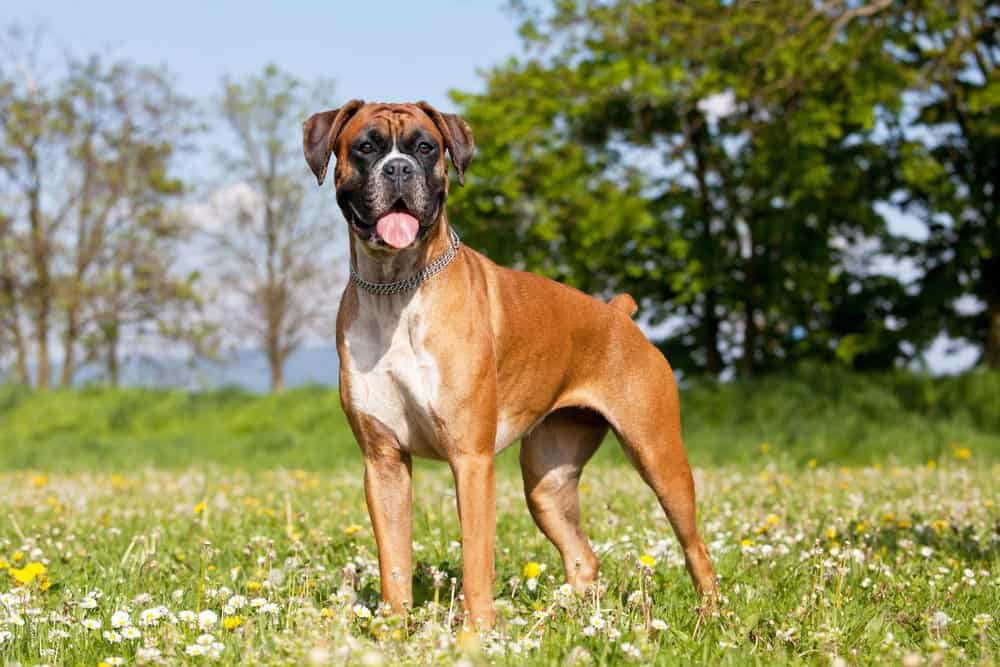
Boxers have won for Best in Show as well as the Working Group finals.
©Lenkadan/Shutterstock.com
The boxer breed comes from Europe, but it doesn’t win many contests for Best in Show over there. Fortunately, Americans love these dogs a lot. They have won for being the Best in Show as well as the Working Group finals, but the latter happened more recently in 2020.
1. The Boxer’s Name Is a Mystery
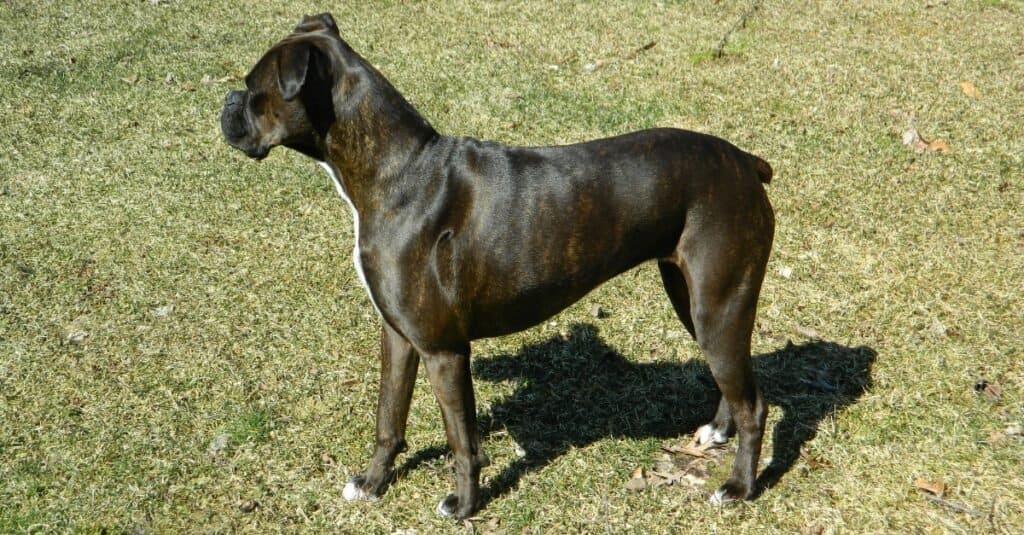
The boxer name may come from a few different sources.
©iStock.com/Richard Paoli
We don’t exactly know how the boxer got its name. Some claim that it comes from a nickname bestowed on the Bullenbeisser. However, others think it comes from the way they play, which includes the way they jump up on someone using their hind legs and then “box” with their front paws. The latter sounds somewhat probable, but we’ll have to get back to you on the origin if it’s ever discovered.
The boxer is a loveable dog breed that has found love and popularity in many places worldwide. Knowing these 10 incredible boxer dog facts, hopefully, you’ve taken a greater interest in learning more about this breed. Although its name may be confusing, it is hard to find such a unique-looking and versatile dog.
The photo featured at the top of this post is © Tara Lynn and Co/Shutterstock.com
Ready to discover the top 10 cutest dog breeds in the entire world?
How about the fastest dogs, the largest dogs and those that are -- quite frankly -- just the kindest dogs on the planet? Each day, AZ Animals sends out lists just like this to our thousands of email subscribers. And the best part? It's FREE. Join today by entering your email below.
Thank you for reading! Have some feedback for us? Contact the AZ Animals editorial team.





